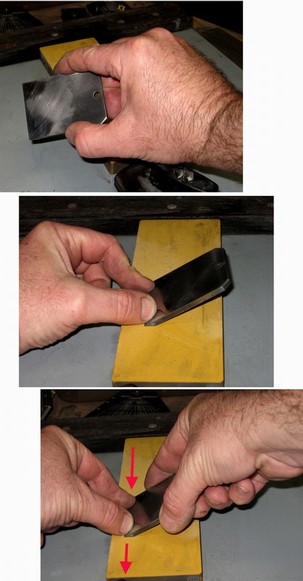
Originally Posted by
roger wiegand

I envy those who have sufficient sensitivity in their hands and the muscle control to both sense and maintain a consistent angle in several dimensions at once while sharpening. If there is a way to learn it I'd love to know about it, decades of just trying hasn't worked. When you're cutting into wood, eg with a chisel, the shape, thickness, and uniformity of the chip coming off the tool provides feedback to keep things on track. When sharpening freehand I've yet to discover any similar source of feedback to correct the process. It's too late when I flip it over to see how I've messed up the edge this time. I think some people must be able to feel when the bevel of a chisel or plane blade is truly flat against the stone. I can't. I'm resigned to using a jig at this point.
It doesn't seem to be so much "a feel" as it is practice and starting slow and watching closely to what your hands are doing. It is like learning typing. Go slow to learn accuracy and the speed will pick up later.
Another bit of help might be to make a video from the side of your sharpening and watch to see if your hands are going strait or dipping up and down.
Yesterday, while touching up a forstner bit, it was noticed how much better the view was from the side as to how my sharpening media was contacting the flat surface.
If you do try watching from the side while holding a stone, make sure you have a good grip or it is secure in its holder. DAMHIKT about this kind of tragedy.
(DAMHIKT - Don't Ask Me How I Know This)
jtk
"A pessimist sees the difficulty in every opportunity; an optimist sees the opportunity in every difficulty."
- Sir Winston Churchill (1874-1965)





 Reply With Quote
Reply With Quote


